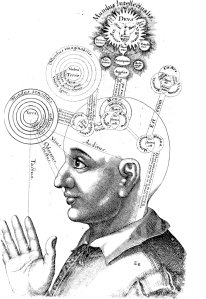Home
The title of this blog comes from the ancient Greek word praxis (πρᾱξις), which Aristotle used to refer the activity of virtue and excellence. Aristotle thought that there were three basic human activities – theoria (knowing), poiesis (creating), and praxis (doing). Aristotle distinguished between eupraxia (good praxis) and dyspraxia (bad praxis, misfortune).
While this might seem a digression, kung fu (also gongfu or gung fu) is a Chinese term that is usually used in the West to refer to certain styles of Chinese martial arts. The original meaning of the word, however, refers to expertise in any skill. Gōng (“achievement” or “merit”) and fū (“man”) is literally “human achievement” and connotes skill derived through great effort and discipline. In the original sense, to practice kung fu meant to strengthen mind and body in the perfection of any skill.
In a similar sense, the root of the word “yoga” is the same as that of the word “yoke,” denoting both a discipline and a tying together. Just as with kung fu, most westerners associate yoga with physical exercises, but the term really refers to any practice used to dissolve the ego, to tie together mind and body, and to achieve union – that is, a discipline you can lose yourself in, whether that is devotion, good works, contemplation, artistic creation, or anything else.
It is odd that westerners seem to have lost track of these concepts somewhere along the way and are only now rediscovering them. Though recent decades have brought a renewed awareness of the concepts of holistic and sustainable ways of life, and of happiness as a process rather than an end, we are still trying to create a synthesis for our emerging culture, to determine what is good “kung fu” for modern life – or in western terms, eupraxia, or best practices.
We intend this site to be a collection of some of the best practices from many traditions, both ancient and modern, for developing core human skills.
More material from The Book of Good Practices Introduction can be found here.

Dec 17, 2012 @ 13:46:07
Much applause for this honorable idea. Looking for to reading/practicing more.
Mar 03, 2022 @ 09:52:18
Thank you so much for all the interesting information you have both shared. As a westerner myself, I really need this kind of educational support. I’m a musician, and playing my instrument the wrong way round (hence writing with the non-dominant hand exercise), definitely changes/improves something internally. Thanks again!